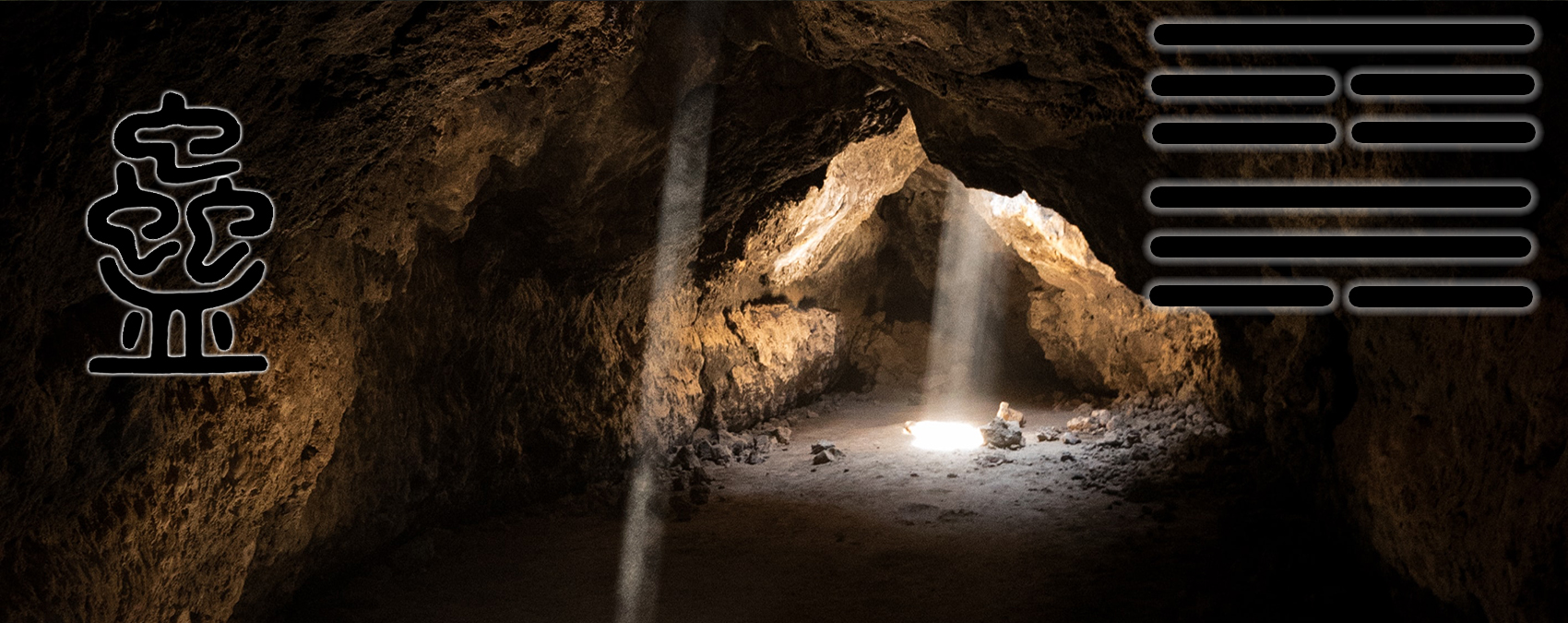Mountain above – Wind below
The Chinese name of this hexagram is Gu, which translates into “worm” or parasite. Other names include Remedying, Corruption, Repair, Detoxifying. This hexagram describes deviation from a natural flow indicating corruption or decay has set in. It is the work of Gu to go back to the origins (when feasible), clean up and move forward, influenced and carrying on with integrating the new change. In other words, correcting the decay and putting something back into motion.
Breaking down the symbolism of the 3-line trigrams helps with understanding the ancient teachings:

When trigram Wind is below (image below right), it references the inner realm of the person or situation. Wind is invisible, gentle and persistent in its ability to penetrate. Wind does not decide the final form of creations, it is the carrier of patterns. The movement of the wind carries fresh air and new influences. Being the inner circumstance of Gu, Wind may be trapped inside Mountain maintaining decay or it may be able to move, using a repairing motion, in and out of Mountain.
Trigram Mountain is on top of trigram Wind, representing hard, outer, immoveable reality. Symbolizing the foundations and boundaries of the situation or one’s life, Mountain can become a prison (stifling movement) or a protection (nurturing while allowing the healing circulation of wind).
The ancient ideograph is on the upper left portion of the image below. The image is of three worms in a container which is said to represent something that is decaying and in need of being repaired, detoxified or remedied.

In summary: Corruption and decay occur constantly on myriad levels as a part of the cycle of life. Gu addresses those situations where something toxic disrupts the stream of ongoing natural life in some way, requiring rooting out, cleansing and renewal. Attitudes, empires, institutions and apple trees (some examples of external reality: Mountain) all may have thrived, but somewhere along the way a warped outlook, greed, elitism or a parasitic insect has worked its way in resulting in deterioration. Natural, healthy growth is stunted or shut down because Wind cannot circulate to cleanse the area. The ancient diviners refer to decay/corruption not only when it is apparent, but also when it is hidden or subconscious as well (inherited from ancestors for example).
Following are a few ideas for interpretations of each line:
Line 1 – This line describes a situation of a long-standing type of influence which needs correction, usually inherited or perhaps unconscious. Either way, one must take responsibility and address it without complaint because sometimes that is just how fate works. If this difficult correction is made, there is success.
Line 2 – An influence concerning the concept of nurturing is negatively impacting the situation; this yin influence is sometimes identified as not receiving enough of what was needed or being smothered with too much. Creating a new influence means creating your own boundaries, neither too rigid nor too porous.
Line 3 – Being persistent despite setbacks or resistance from others while cleaning up and reforming decay, perhaps you may have used more force than was needed. While learning this is a forgivable error if force was unwarranted, but sometimes a little more than usual force is called for at the beginning of reforming an influence.
Line 4 – This is a situation described as, knowingly or unknowingly, being comfortably entrenched in a corrupted influence, perhaps arising out of familial-type mentality. Ignoring the decay through reluctance to challenge the status quo, laziness or co-dependency leads to regret. Guidance suggests one cannot grow successfully without forming their own solid foundation.
Line 5 – Leadership, in this circumstance, means one may be in a position to recognize decay and acknowledge the scope of what needs to be done in constructive, persuasive and tactful ways. For success, use praise and encouragement of others rather than criticism. There is also a caution against being too self-critical.
Line 6 – This situation is described as the task accomplished successfully and marked as the moment to begin establishing something new. Even “working on what has been spoiled” has its limits so moving on successfully includes clear recognition that getting past this corruption means the work ahead serves a higher purpose.
